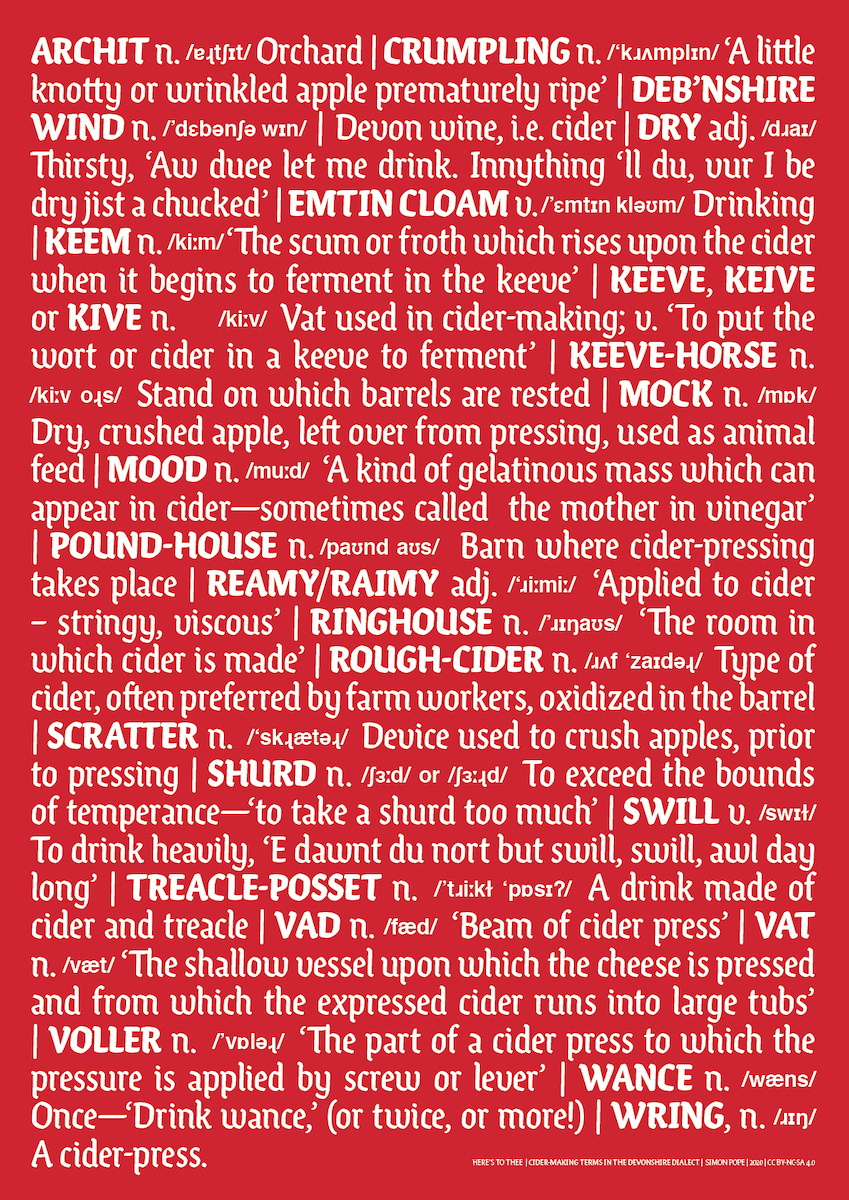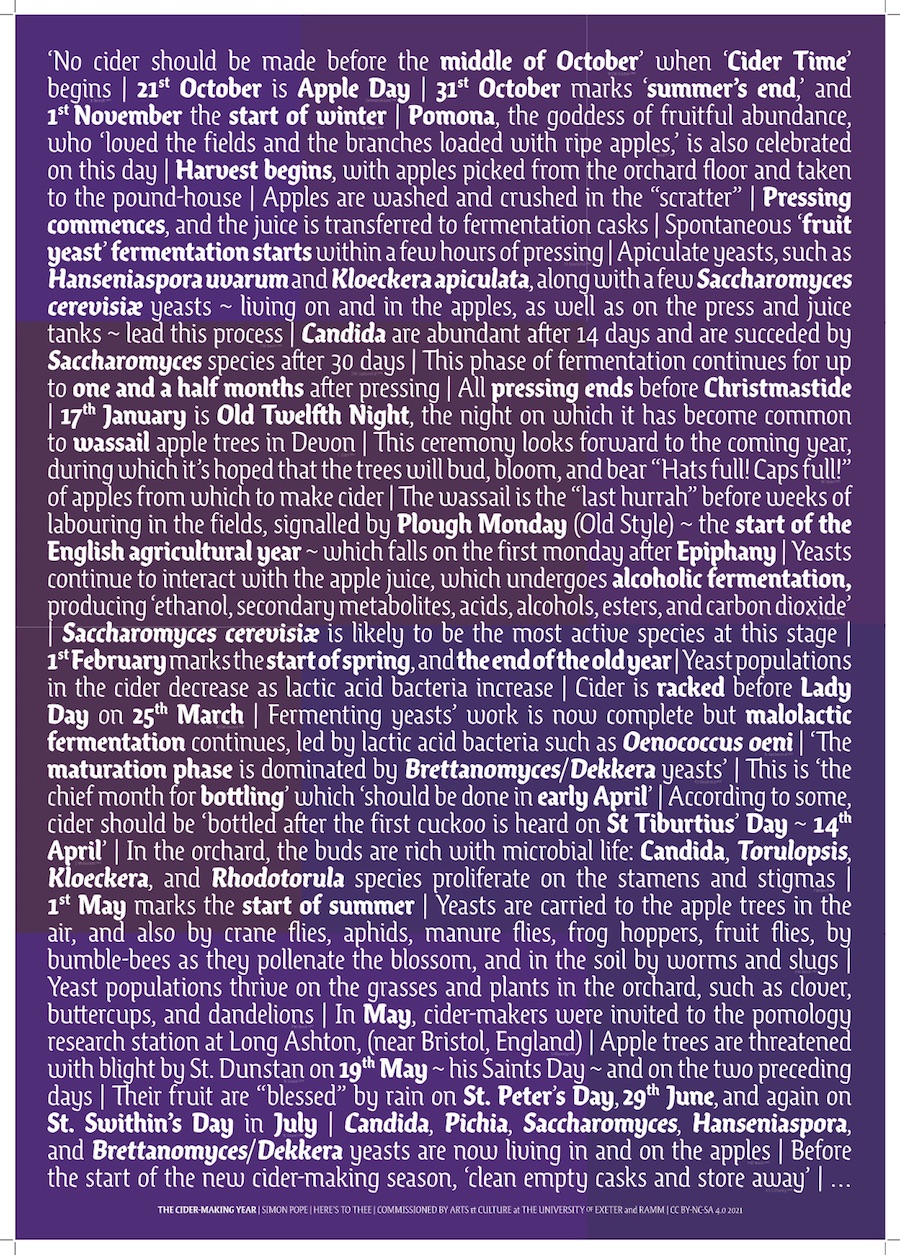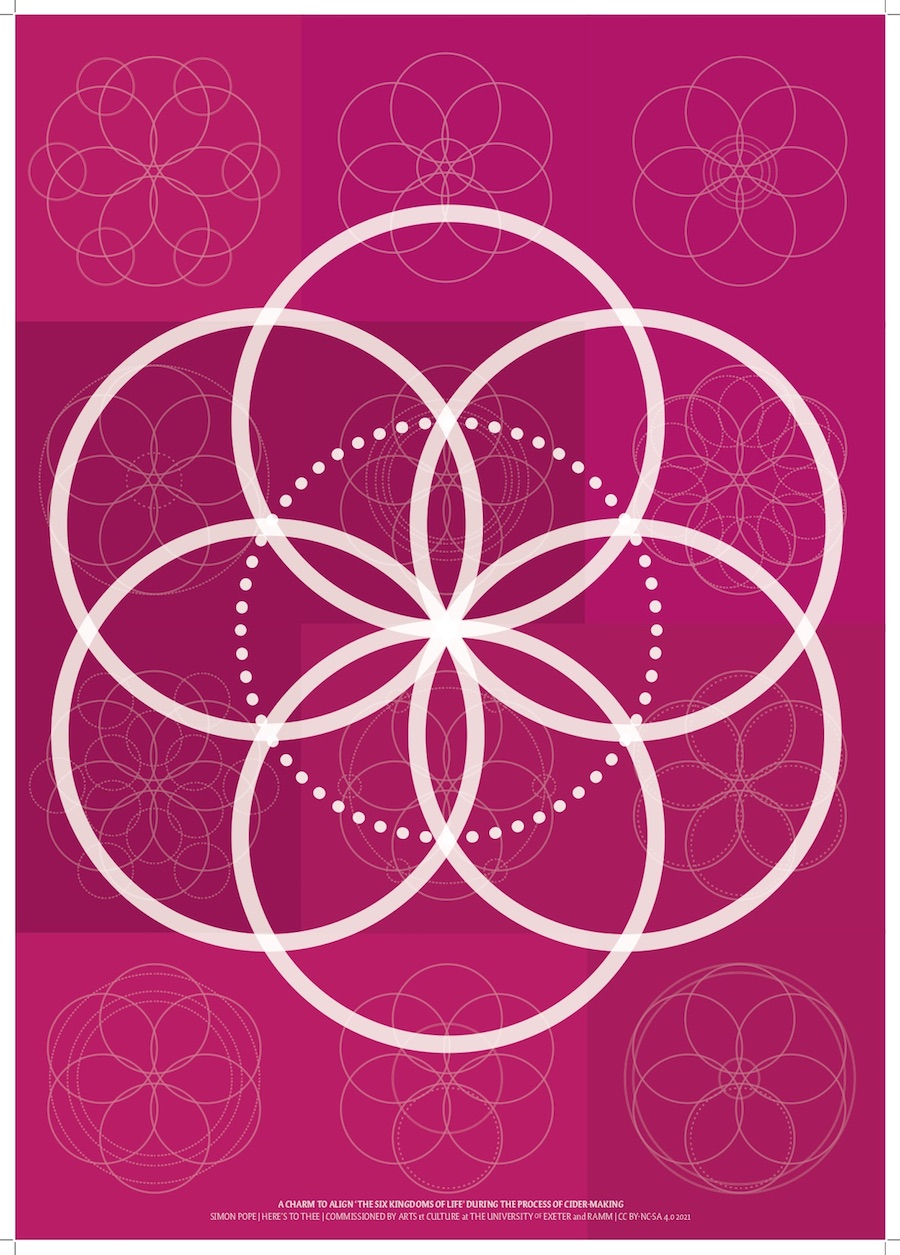BOOK
A book summarizing the project, and pointing towards its next phase, was printed at the end of the Arts & Culture commission. It was distributed to project particpants and made available for purchase through the RAMM shop. §
POSTER SERIES
A series of posters were produced throughout the second stage of the project, from 2020-22. This was initially a pragmatic step, given that the practical work on-the-ground in Devon was postponed due to Sars-CoV-2 pandemic-related restrictions. These posters were distributed to project participants, as snapshots of remote activity, and to reiterate the themes of the project to all those concerned. These textworks were printed in a limited edition by Ashley House printers in Exeter and distributed by mail. §
CIDERMAKING TERMS IN THE DEVONSHIRE DIALECT
The first poster was developed at the start of the new commission, in repsonse to the news that the UK national dialect day had been cancelled. It was at this event in 2013 that I'd first met project participants Bill Murray – who had been co-convenor that year – and Jim Causley. During workshops at Halstow in late 2019, some dialect cidermaking terms had been used, such as poundhouse, and mock, and the derivation and use of the term rough cider had been discussed. Other terms in this poster, come from secondary sources, including those provided by Dr. Paul Cleave at the University of Exeter. Felix Nash, of The Fine Cider Company, also distributed copies to members of his Pommelier Club. It was made available for sale through the RAMM online shop. The poster was mailed to project participants in December 2020. Special thanks to Ronnie Pope for International Phonetic Alphabet coding. §
THE CIDERMAKING YEAR
This is Cider Time. Apple Day has been and gone, and the celebration of Pomona – the Roman goddess of orchards and fruit – is coming into view. This poster, detailing microbial activity throughout the cider-making year, was given to project participants, and distributed to a wider public through the RAMM shop. It states 1st November as Pomona Day; a controversial point in some circles, with recent mention of 13th August as the date of the joint-celebration of Pomona AND the god Vertumnus in James Crowden's new book – a pithy, juicy, and very comprehensive account of 'how an ancient craft became a way of life'.
Apparently, according to this discussion thread, my assumption comes from a misreading first introduced into the literature in the late 17th century. However, cider apples are harvested at Halstow during the late autumn and early winter, rather than summer, so it seems appropriate to invoke the name of Pomona at this time "of fruitful abundance" on the farm.
The poster describes the cider-making process in terms of human and microbial activity, emphasizing the interactions between hybrid collective of protagonists who are at work in throughout. This begins with the harvest of apples at the start of "Cider Time", through pressing, primary and malolactic fermentation, to bottling. Descriptions of the relationships of yeasts and bacteria to the apple juice, to each other, and to other species are threaded through with key dates in the calendar, such as wassailing, Plough Monday, St. Dunstan's Day, etc. §

A CHARM TO ALIGN THE SIX KINGDOMS OF LIFE
Early in the second stage of this project, I began to consider wassailing as a part of a rich tradition of popular magic that seeks to change the material nonhuman world through the spoken or written word. Archaeologist Chris Gosden, in The History of Magic (2019), claims that popular magic practices of this kind can enable us to experiment with human-nonhuman relationships, to think of them anew at a time of climate crisis, species depletion and so on, where the qualities of these relationships have to change.
In the barn at North Halstow, several hexafoil charms are still visible, inscribed, high-up, on the cob walls. Protection charms such as these were commonly drawn into walls and onto furniture.
In this poster, the hexafoil aligns those from the so-called six "Kingdoms" of Life that are at work during the cidermaking process: humans, flora, fauna, microbes, collectively taking their part in the production of cider – as another example of how we might experiment with the ways in accord agency and value to humans and all others that are brough together through the process of making cider.This and The Cidermaking Year textwork, were issued as a double-sided poster. The colourways used for each image are derived from the violet and fuschia/magenta dyes used in bacterial identification. §
